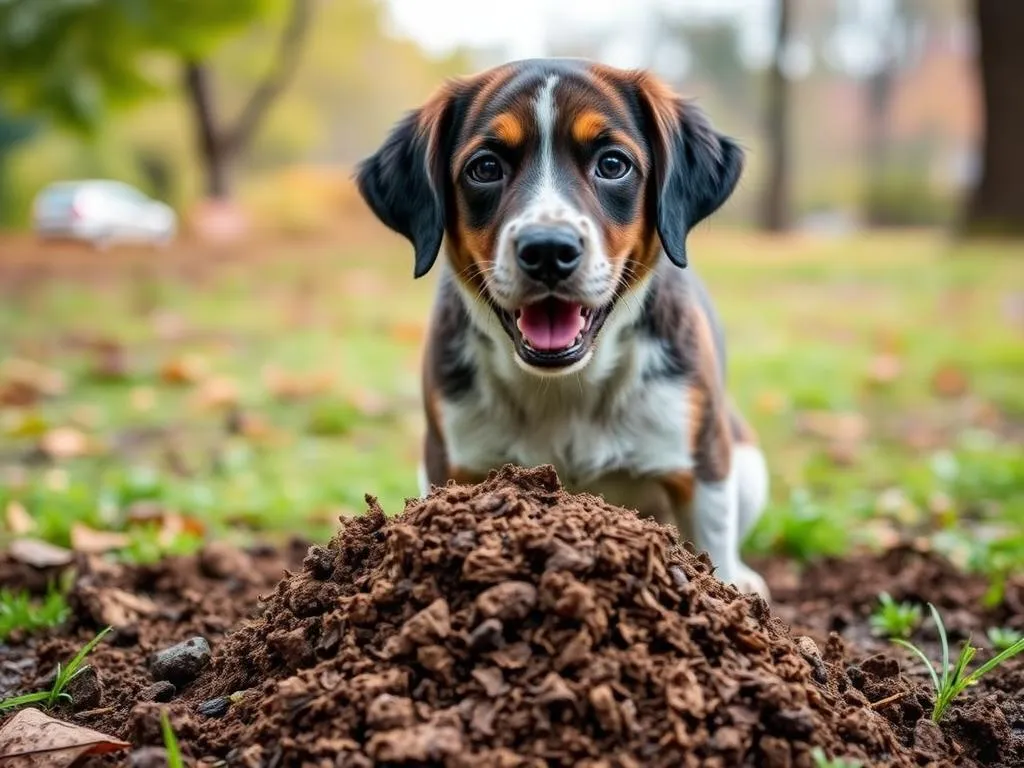
Introduction
Proper dog waste disposal is a crucial aspect of responsible pet ownership. Unfortunately, many pet owners overlook the importance of managing dog poop, leading to a range of problems that affect both health and the environment. Dog waste can harbor parasites and diseases, posing health risks to humans and other animals. Moreover, improperly disposed of dog poop can harm local ecosystems and water quality, contributing to pollution and unpleasant odors.
This article aims to explore effective methods on how to dispose of dog poop without smell. From understanding the significance of proper disposal to implementing best practices and odor control techniques, we’ll cover everything you need to know for a cleaner, healthier environment.
Understanding the Importance of Dog Waste Disposal
Health Implications
Dog waste is more than just an eyesore; it can pose serious health risks. Various parasites, including roundworms and hookworms, can be transmitted through dog poop. These parasites can infect humans, especially children who may play in contaminated areas. Additionally, dog feces can carry bacteria such as E. coli and Salmonella, which may lead to gastrointestinal illnesses in both humans and other animals. As a responsible pet owner, ensuring that your dog’s waste is disposed of properly is vital for maintaining the health of your family and community.
Environmental Impact
The environmental consequences of neglecting dog waste disposal are significant. When left on the ground, dog poop can leach harmful bacteria and nutrients into the soil and waterways, contributing to pollution and impacting local wildlife. The nitrogen and phosphorus in dog waste can lead to excessive algae growth in water bodies, which depletes oxygen levels and harms aquatic life. By disposing of dog waste correctly, you can help protect the environment and maintain healthy ecosystems.
Community Responsibility
As pet owners, we share a collective responsibility to keep our neighborhoods clean. When dog poop is left unattended, it not only creates an unpleasant environment but also fosters negative perceptions of dog ownership within the community. By taking proactive steps to manage waste, you contribute to a positive image of pet ownership and encourage others to do the same.
Best Practices for Dog Poop Disposal
Daily Cleaning Routine
Establishing a consistent cleaning routine for dog waste is essential. Regularly removing dog poop from your yard or public spaces helps minimize odor and prevents the accumulation of waste. It’s advisable to set a schedule—daily or every few days—depending on the number of dogs and their size.
Recommended tools for effective waste removal include:
- Poop bags (biodegradable options are recommended)
- Pooper scoopers
- Gloves for hygiene
Choosing the Right Disposal Method
Biodegradable Bags
Using biodegradable bags is one of the best ways to dispose of dog poop without contributing to plastic waste. These bags break down more naturally than traditional plastic bags, making them a more eco-friendly option. When selecting biodegradable bags, look for brands that are certified compostable. Some popular options include:
- Earth Rated Poop Bags
- Pogi’s Poop Bags
- Beco Bags
Composting Dog Waste
Composting dog waste can be an effective way to recycle it while minimizing odor. However, it is crucial to follow safe composting practices to avoid health risks. Here’s a step-by-step guide for composting dog poop:
- Choose the Right Location: Select a well-drained area of your yard away from vegetable gardens or water sources.
- Gather Materials: You’ll need a compost bin, dog waste, dried leaves, grass clippings, and shredded paper.
- Layering: Start with a layer of dry materials, followed by dog waste. Alternate layers of waste and dry materials to maintain good aeration.
- Monitor Temperature: Ensure the compost reaches high temperatures (around 140°F) to kill pathogens. Use a compost thermometer to check.
- Curing: Let the compost cure for at least six months before using it in the garden, ensuring it’s fully broken down.
Flushing Dog Waste
Flushing dog waste down the toilet is another viable method, but it’s essential to do it correctly to avoid plumbing issues. Here’s how to flush dog poop safely:
- Use only small amounts: Flush small, manageable amounts of waste at a time.
- Avoid flushing bags: Make sure to remove the poop from the bags before flushing, as plastic can cause blockages.
- Check local regulations: Some areas may have specific guidelines about flushing pet waste, so it’s essential to be informed.
Utilizing Dog Waste Stations
Dog waste stations are designated areas equipped with bags and disposal bins for pet waste. They can significantly reduce the hassle of carrying bags and finding disposal locations. To locate or advocate for waste stations in your area, consider:
- Contacting Local Parks and Recreation: They may be able to install stations in public parks.
- Community Initiatives: Join or start initiatives focused on improving pet waste management in your neighborhood.
Reducing Odor When Disposing of Dog Poop
Immediate Action
Taking prompt action after your dog relieves itself is crucial for minimizing odor. Carry a supply of poop bags during walks, and clean up as soon as possible to prevent lingering smells. This practice not only keeps your environment clean but also makes the cleanup process smoother.
Odor Control Techniques
Using Deodorizers
Incorporating deodorizers can significantly help in controlling the smell of dog waste. Consider these options:
- Natural Deodorizers: Baking soda, vinegar, and essential oils can neutralize odors effectively. Sprinkling baking soda over the waste before disposal can help absorb the smell.
- Commercial Deodorizers: There are various products available that are specifically designed to tackle pet odors. Look for ones that contain enzymes to break down waste-related smells.
- DIY Solutions: A mixture of water and vinegar in a spray bottle can serve as an effective natural deodorizer.
Regular Yard Maintenance
Keeping your yard clean and well-maintained is essential for odor control. Here are some tips:
- Designate a Waste Area: Create a specific spot in your yard for your dog to relieve itself. Use gravel or mulch to help with cleanup.
- Regular Cleaning Schedule: Establish a regular cleaning routine and stick to it.
Proper Storage Solutions
If you’re not able to dispose of dog poop immediately, proper storage is essential for reducing odors. Here are some tips:
- Odor-proof containers: Invest in odor-proof containers designed for storing dog waste until it can be disposed of properly.
- Seal bags tightly: Ensure that poop bags are sealed tightly to minimize smells.
Training Your Dog for Easy Cleanup
Teaching Commands
Training your dog to respond to specific commands can streamline the cleanup process. Consider the following commands:
- “Go Potty”: Use this command consistently to encourage your dog to relieve itself in designated areas.
- “Leave it”: This command can help prevent your dog from investigating other animals’ waste, making your walks more manageable.
Creating a Designated Area
Establishing a specific spot for your dog’s bathroom needs can simplify cleanup. Here’s how:
- Choose the Right Surface: Use gravel, mulch, or grass as a designated area to help with easy cleanup.
- Consistent Training: Take your dog to this area consistently to reinforce the behavior.
Conclusion
In conclusion, the importance of how to dispose of dog poop without smell cannot be overstated. Proper waste management protects public health, preserves the environment, and fosters a sense of community responsibility. By implementing daily cleaning routines, choosing the right disposal methods, and employing effective odor control techniques, you can significantly improve your experience as a pet owner.
It’s not just about cleanliness; it’s about creating a healthier, happier environment for everyone. Taking the time to educate yourself and act responsibly can make a world of difference for your community and the planet.
FAQs
What is the best way to dispose of dog poop?
The best methods include using biodegradable bags, composting (with proper practices), or flushing it down the toilet.
Can I flush dog poop down the toilet?
Yes, but ensure to remove it from bags and flush small amounts to avoid plumbing issues.
How do I reduce the smell of dog poop in my yard?
Regular cleaning, using deodorizers, and maintaining a designated waste area can help control odors effectively.
Are there any health risks associated with dog poop?
Yes, dog waste can carry parasites and bacteria that pose health risks to both humans and other animals. Proper disposal is essential for safety.









